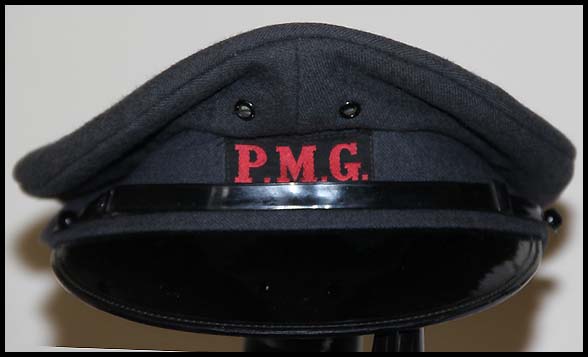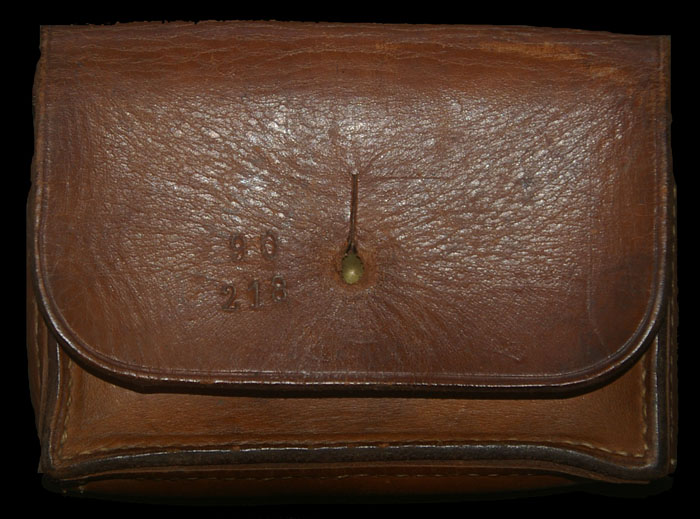Uniforms for the Telegram Messengers.
- Home, index, site details
- Australia 1901-1988
- New South Wales
- Overview of NSW
- Telegraph lines
- Telegraph Offices
- Date stamps
- Forms
- Envelopes
- Rates
- Stamps
- Queensland
- Overview of Qld
- Telegraph lines
- Telegraph offices
- Date stamps
- Forms
- Envelopes
- Rates
- Stamps
- South Australia
- Overview of SA
- Telegraph lines
- Telegraph Offices
- Date stamps
- Forms
- Envelopes
- Rates
- Stamps
- Tasmania
- Overview of Tasmania
- General developments
- Reports
- Organisation
- Telegraph lines
- Telegraph Offices
- Date stamps
- Railway lines
- Forms
- Envelopes
- Rates
- Stamps
- Overview of Tasmania
- Victoria
- Overview of Vic.
- Telegraph lines
- Telegraph offices
- Date stamps
- Forms
- Envelopes
- Rates
- Stamps
- Ephemera
- Western Australia
- Overview of WA
- Telegraph lines
- Telegraph Offices
- Date stamps
- Forms
- Envelopes
- Rates
- Stamps
Each Colony - and later the Commonwealth Postmaster-General's Department - had its own distinctive uniform for Telegram Messengers especially related to:
Some people had their own reasons for messengers to wear a distinctive uniform. TELEGRAM, in the Brisbane Courier of 19 April 1862, observed as follows:
"Although I am a person who very seldom makes use of the magical contrivance by which messages are transmitted thousands of miles in a few seconds, I am yet capable of forming a pretty accurate idea as to the advantages derivable therefrom.
But, Sir, I was under the impression that celerity was everything in connection with the telegraph wires. The clerks must be smart for the fluid will not accommodate itself to their idleness, even if they should be idly disposed; the sender of tep message avails himself of the wires so that his friend may get the news as quickly as possible and the very idea of a telegraph altogether suggests despatch.
It appears to me, however, that the electric battery has not yet imparted the necessary vitality to the legs of the messengers. Marbles are just now " in" and the attraction to youthful minds either to join in the game or to look on seems to be irresistible. But, putting marbles aside, and other juvenile amusements, there is something so provokingly lethargic about the messengers that one almost feels inclined to give them an impetus occasionally. Fancey the annoyance of a person who, imagining that the message may be for himself, sees one of these sprightly young shavers cooly taking a " lift" in a snail-paced dray, which the slowest walker might keep up with. Yet this sort of thing goes on, to my knowledge.
At present the culprits almost escape notice, except from those who know them well by sight, and I would suggest that the messengers connected with the Queensland Telegraph Offices should have a distinguishing badge - such as is employed elsewhere. It would then be impossible for a young imp to flatten his nose against a window-pane for fifteen consecutive minutes or indulge in marbles or ride surreptitiously upon a lumbering dray, without attracting notice. This would lend to detection and they might be electrified in a way they little expected.
I would suggest that every messenger should be compelled to wear a cap-ribbon having upon it, in legible letters, the words " Electric Telegraph" and that there should be some kind of uniform, the color of which should be distinguishable at a distance, and the cost of which would be very trifling.
I don't doubt but that this suggestion will be laughed at, and those who laugh are perfectly welcome to do so, for it is open to them to propose some other plan.
Meantime, I remain,
Yours, &c TELEGRAM.
In New South Wales, the uniform for Telegraph Messengers was changed in December 1860 to a "very neat uniform of light grey tweed similar to that worn by some of the volunteer rifle-men".
Western Australia: Reported in the Western Australia Times of 20 July 1875:
UNIFORM FOR OFFICIAL MESSENGERS: "We are glad to notice that the Post Office letter carriers and Telegraph Telegraph messengers in Perth have been supplied by the Government with a uniform each. They first came out in the new tunics on Saturday last and were much admired, especially by those who, in other parts of the world, have been accustomed to see those officials in a certain kind of dress or uniform.
The letter carriers wear a double breasted blue cloth frock coat, with red collar and cuffs, and richly gilt crown buttons, trousers of blue cloth, French peaked cloth cap with scarlet band, and metal plate lettered "G.P.O."
The telegraph messengers wear a double breasted, blue cloth hip jacket with red collar and cuffs, and gilt crown buttons, blue cloth trousers with red piping and French peaked cap with scarlet band and metal plate lettered "Telegraph".
The idea originated with His Excellency the Governor who gave instructions and authorized the necessary expenditure for supplying the uniforms. Before commencing their duties on Saturday morning, the letter carriers and telegraph messengers were presented by the Head of their Department Mr. Helmich to His Excellency the Governor who, after examining their uniforms, addressed a few kind words to them and expressed himself much pleased at their appearance".
The production of clothing for Telegraph Messengers was contracted out for early days. Advertisements for tenders appeared frequently - for example, in NSW the Gazette and the Sydney Morning Herald of 7 December 1872 carried advertisements for tenders as follows:
CLOTHING FOR TELEGRAPH MESSENGERS.
TENDERS will be received at this office until noon on Thursday, the 12th instant, for the supply, within one month of date of acceptance of tender, of fourteen (14) TELEGRAPH MESSENGERS SUITS.
Tenders must be addressed to the Secretary to the Post Office, Sydney, and endorsed "Tender for Uniforms."
The Stamp duty on the accepted tender, viz., 2s 6d is to be borne by the successful tenderer.
Further particulars can be obtained on application to the Superintendent of Telegraphs".
There are also pictures which show what messengers did not wear!!!
The Telegraph Messenger had always had a very distinctive cap. The design of the cap varied significantly over the years and amongst the colonies.
 |
A PMG cap issued on 19 September 1963 to George Parsons. The same style had been used since the 1920s. |
The purpose of the bag was to have something to carry the delivery envelope with the telegram safely, whithout creasing, to the destination. Sometimes several telegrams were carried at the same time. Also included in the bag would be the delivery dockets and a pencil/pen to inform the recipient where the telegram might be located.
The bags varied significantly in colour and size. They would have slots which a belt could pass through to enable them to be slung from the waist or they would be attached directly to a belt.
Two designs are shown below:
 |
Telegram delivery pouch used in Tasmania about 1910.
It is made of very stiff leather. There are two loops at the back for a belt to pass through. The back has the following impressed into the leather: W&G Genders |